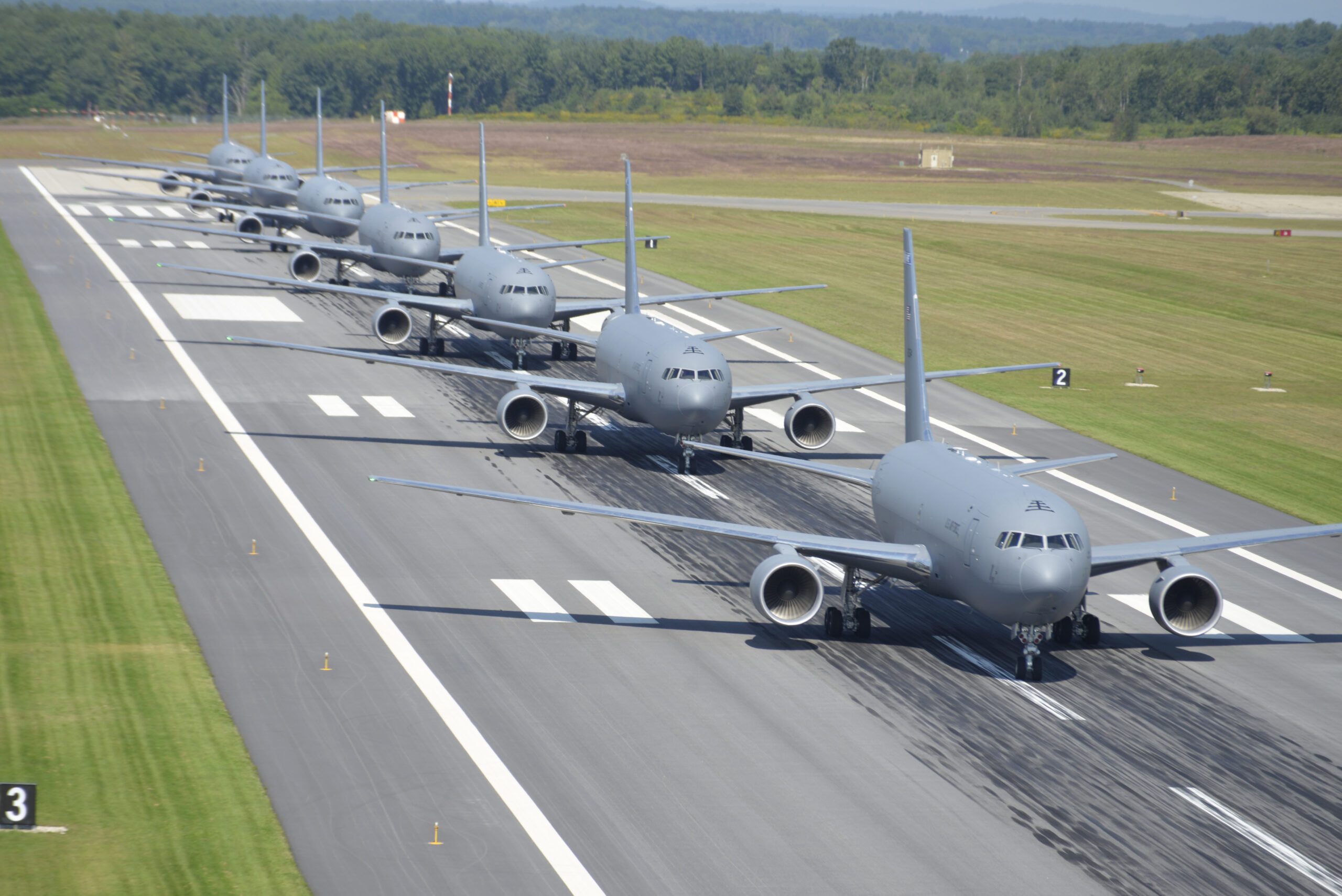The U.S. Air Force has confirmed that it is still not using its fleet of KC-46A Pegasus aerial refueling tankers to support combat operations, and will not for the foreseeable future except in response to “emergency need.” This is despite the service recently touting that these aircraft can now “support 97 percent of the daily Joint Force air refueling demands” as part of what it calls an Interim Capability Release plan intended to help move the long-troubled jets toward a truly operational state.
On May 31, 2022, Air Force Gen. Mike Minihan, head of Air Mobility Command (AMC), approved the seventh Interim Capability Release (ICR) for the KC-46As, which the service currently has 59 of in inventory. This authorizes “daily task-able operational use” of these tankers to refuel more Air Force, as well as U.S. Navy and Marine Corps aircraft, “during U.S. Transportation Command-tasked missions.”
The specific types included in the seventh ICR are: F-35B and F-35C Joint Strike Fighters, B-1B bombers, P-8A Poseidon maritime patrol planes, KC-10A Extender tankers, E-8C Joint Surveillance Target Attack Radar System (JSTAR) battlefield management aircraft, EC-130H Compass Call electronic warfare planes, and all C-135 variants. That last category includes KC-135 tankers and RC-135 intelligence, surveillance, and reconnaissance aircraft.
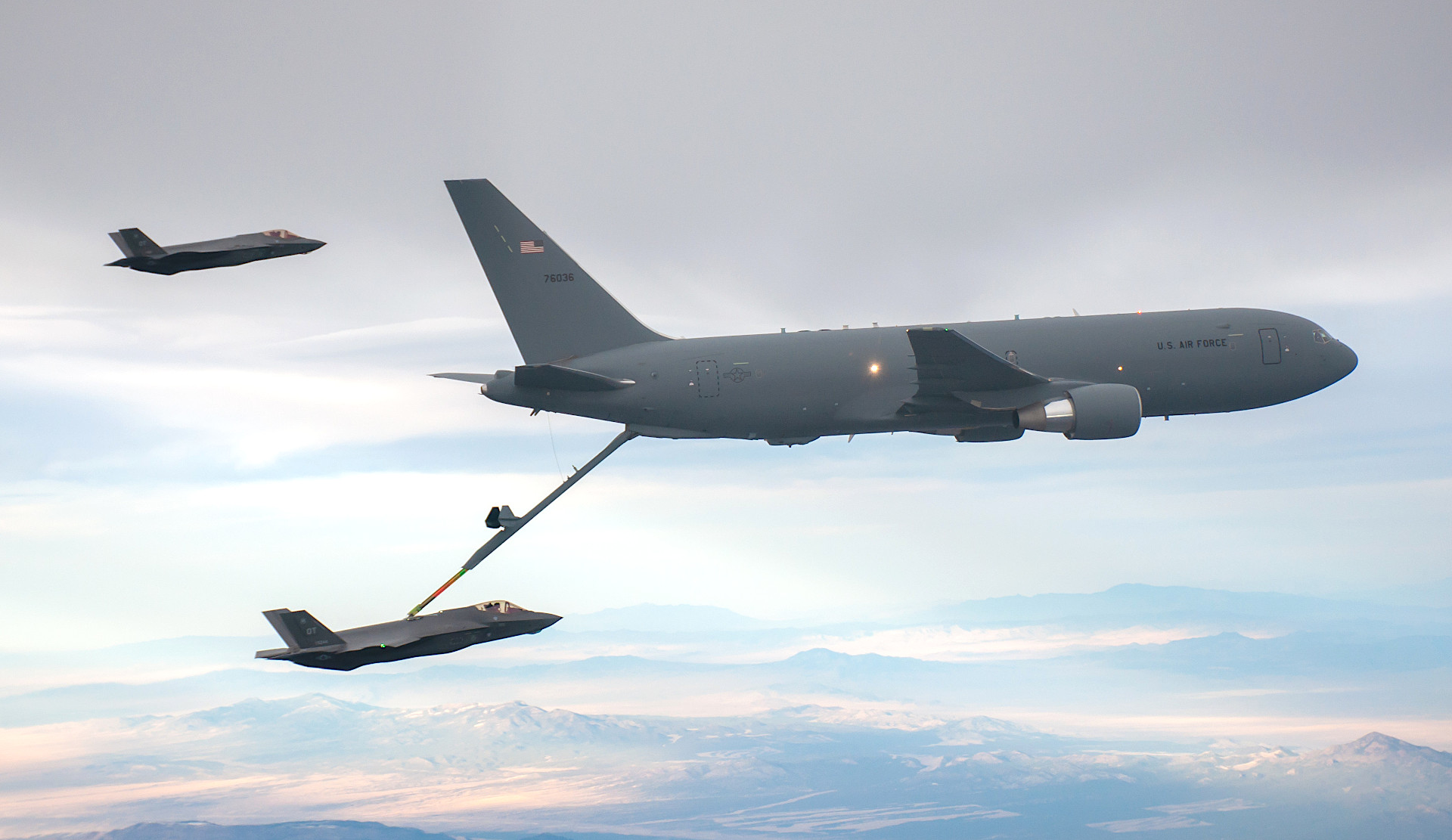
The B-2 bomber, the CV-22B Osprey tilt-rotor, the E-4B Nightwatch airborne command post, and the MC-130H Combat Talon II special operations tanker/transport are not currently covered by any of the seven ICRs. Persistent issues with the KC-46A’s boom separately continue to restrict its ability to refuel the A-10 Warthog ground attack aircraft. It is worth noting that the KC-46As have and will continue to refuel these aircraft at least as part of ongoing test and evaluation work.
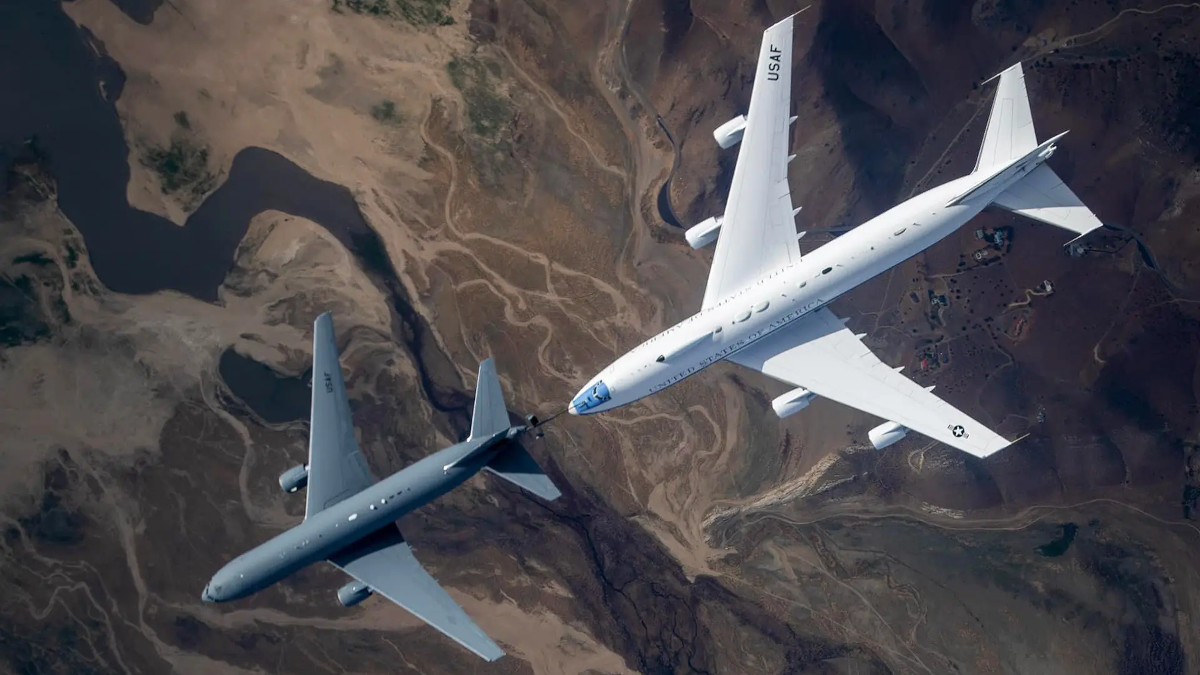
“In May 2021, the KC-46A was not cleared to operationally support any USTRANSCOM missions,” Minihan said in a statement. “With a team of incredible professionals across the enterprise analyzing the data and making risk-informed decisions, we’ve deliberately and aggressively accelerated the Pegasus’ operational use.”
Back in 2020, now-retired Air Force Gen. David Goldfein, who was then Chief of Staff of the Air Force, had publicly revealed that the service was not using the KC-46A for routine combat or non-combat aerial refueling missions. He further said that the service would employ these tankers in support of combat operations except to support emergency contingencies.
“That 2020 position still applies,” Air Force Maj. Hope Cronin, an AMC spokesperson, told The War Zone on June 3. “From an AMC standpoint, we currently stop short of full combatant command deployments, barring emergency need.”
The Air Force is still currently relying on its existing KC-135 and KC-10A tankers, which together with the KC-46 make up the service’s current aerial refueling fleets, to perform those “full combatant command deployments.” Those deployments cover things like supporting U.S. air operations over active conflict zones, like in Iraq or Syria, as well as other non-training-related operational demands, such as refueling aircraft supporting NATO’s enhanced security posture in Europe.
“ICR helped us identify which parts of the mission we can support now, given known technical limitations, to help ease operational burden on the broader AR [aerial refueling] fleet and the Joint receiver demand USTRANSCOM manages daily,” Cronin added. “We will… continue to exercise the aircraft to prepare for both combat and non-combat operations through our ECE [Employment Concept Exercise] activities.”
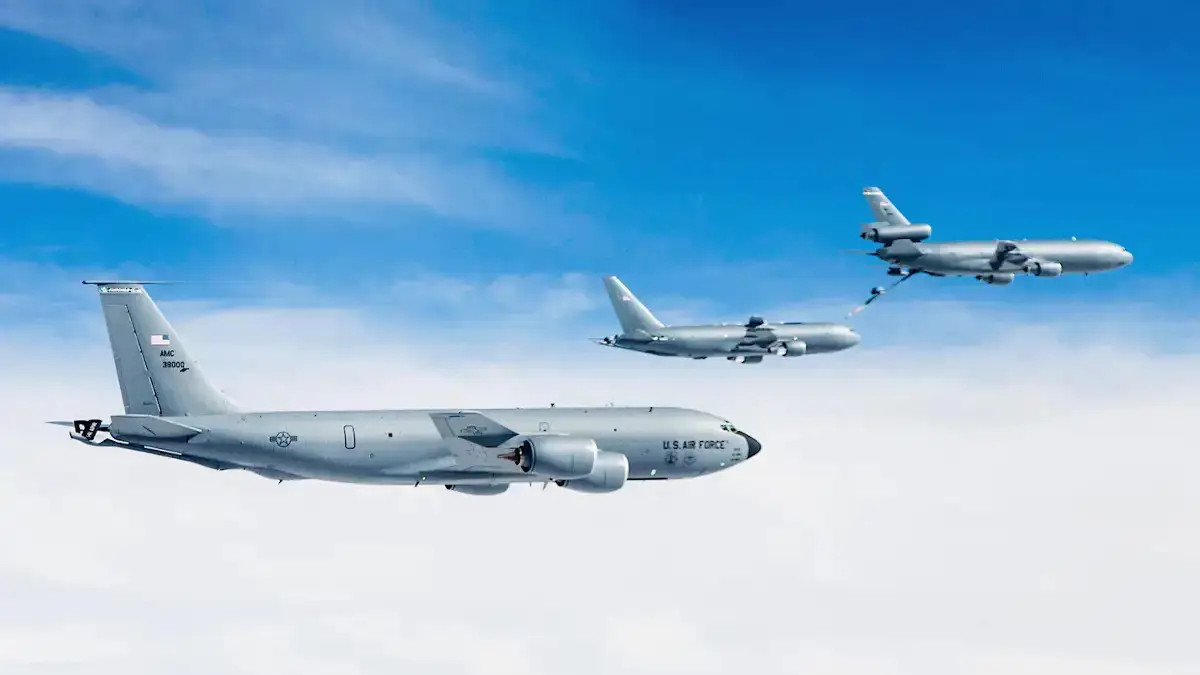
The ECEs, the first of which occurred in April, are a new addition to the broader ICR effort and are designed to work KC-46As into major exercises in the United States and abroad. In addition to approving the refueling of different aircraft types, past ICRs have allowed the use of Pegasus tankers to provide gas to certain foreign examples of those planes. The next planned ECE will see KC-46As support the latest iteration of Exercise Valiant Shield, a major biennial training event in the Pacific region that also involves naval and ground forces.
Fielding the KC-46 has proven to be an absolute saga for the service, having suffered from a litany of issues that delayed the delivery of the first examples and continue to prevent them from reaching a formal initial operational capability (IOC). The biggest remaining problems with the aircraft are issues with the design of its boom and its Remote Vision System (RVS).
Boom operators on previous Air Force tankers performed their tasks while physically in positions at the back of the aircraft. On the KC-46A, feeds from an array of video cameras at the rear of the plane combine to provide boom operators in the main cabin with a hybrid 2D/3D view. This view is fully visible only when wearing special glasses similar to those you might use to watch a modern 3D movie.

Simply put, the original version of the RVS didn’t work as fully intended, as you can read more about here. The problems with this system have long raised safety concerns, including surrounding the potential for the boom to strike the receiving aircraft, something the Air Force has worked to mitigate in the meantime. Even relatively minor damage from a boom scraping across an aircraft could be an issue, especially with regards to stealthy jets that rely on their specialized skins to help evade enemy radars. All of this can only raise questions about the exact operational utility of the existing KC-46As in supporting combat operations if required due to emergency circumstances.
Boeing is now working with Collins Aerospace to develop an improved design. The KC-46A contract is a firm, fixed-price arrangement, which means that the company has had to pay more than $5.4 billion out of pocket to fix the boom and RVS issues, among others, over the years. At the same time, as a result of subsequent negotiations with Boeing, the Air Force has agreed in some cases to pay some of the costs to resolve various deficiencies, including in the development of the so-called “RVS 2.0.”
Secretary of the Air Force Frank Kendall said during a live interview held at the Heritage Foundation think tank this week that he felt that the KC-46A program might have turned out differently under a more flexible contracting arrangement. “You’ve got to let the contractor kind of do what it wants, because he’s taking the risk on the cost,” he said, according to Air Force Magazine, without really explaining the U.S. government would otherwise have “supervised the contractor more aggressively.”
With all this in mind, the Air Force has and continues to highlight the ICR plan as providing a pathway to finally making progress in getting the KC-46A fleet operational. It certainly has offered a way to help free up KC-135R and KC-10A tankers to be used on missions that the Pegauses are still not capable of performing, including full combatant command deployments.
Meanwhile, the Air Force is continuing to retire older tankers at a time when senior officials have often complained about there not being enough tanker capacity overall to support existing and emerging demands.

During his talk at the Heritage Foundation, Kendall said his service plans to ask Congress to cut the total number of tankers the Air Force is legally required to have in service from 479 down to 455. He said the 455 number was arrived at after an analysis of both operational requirements and budgetary limitations.
Kendall had also said at a hearing earlier this year that he was uncertain about the need to hold a new tanker competition to help fill the gap between the end of currently planned KC-46A purchases – 179 in total – and the expected acquisition of a still largely notional future aerial refueling platform. This would indicate that the Air Force is actively considering just buying more Pegasus tankers and abandoning its previously announced plans to run a competition for a new “Bridge Tanker” program. Lockheed Martin, together with Airbus, has already lined up a challenge to Boeing’s troubled offering. You can read more about the proposed LMXT tanker, which is based on Airbus’ A330 Multi-Role Tanker Transport (MRTT), a design that has been pitched to the Air Force before and that lost out to the KC-46A, here.
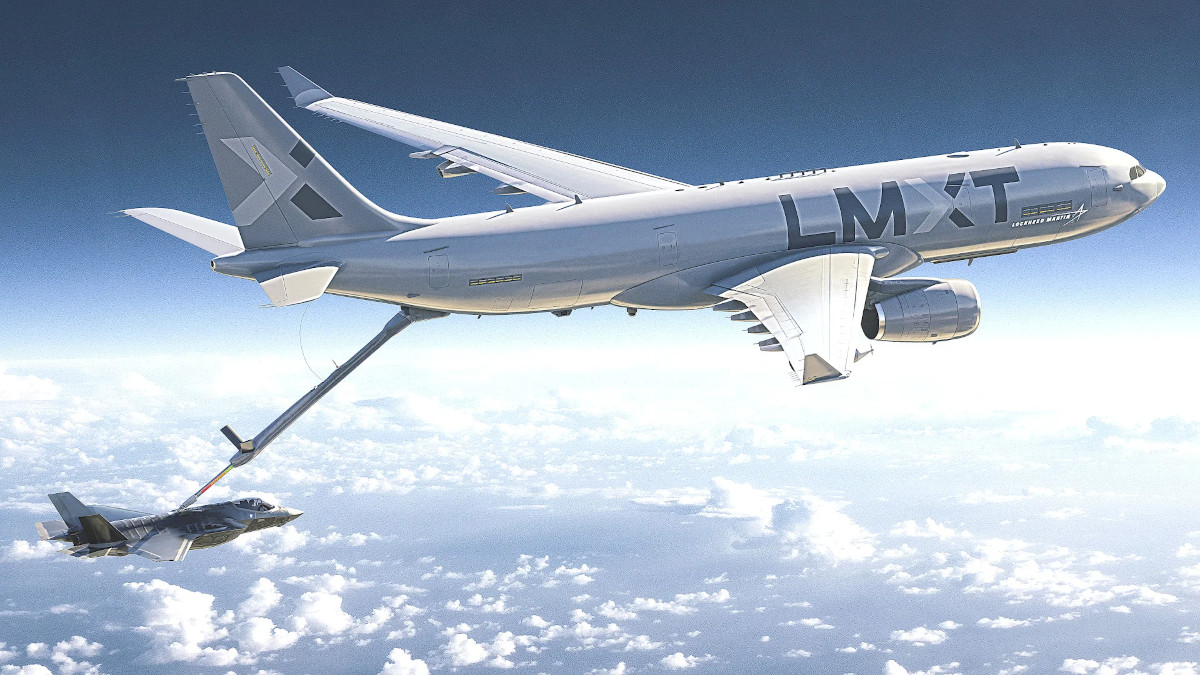
Representative Jerry Carl, a Republican from Alabama, where Lockheed Martin says the LMXT would be built if it won the bridge tanker deal, told Kendall that the House Armed Services Committee would “go ballistic” if the competition was scrapped.
Whatever the case, the KC-46A remains years away from reaching an official IOC, which will come after the redesigned RVS is determined to be adequate and is actually integrated onto a sufficient number of tankers. As it stands now, that’s not expected to occur until at least some time in 2024 at the earliest. It remains unclear when the service may feel comfortable using these tankers to support combat operations when it doesn’t absolutely have to.
“Until that visual system is upgraded, AMC does not have a plan to declare this aircraft fully operationally capable,” Air Force Brig. Gen. Ryan Samuelson, the KC-46 Cross-Functional Team lead, told Aviation Week for a story published this week. “However, does that mean you won’t see the KC-46 around the world filling [aerial refueling] mission sets? No. It means you will see that, it’ll just be a measured risk.”
That “measured risk” and the continued unwillingness to employ KC-46As in support of routine combat operations, among other things, are likely to be major factors in the still-evolving future of these tankers and how the Air Force ultimately decides to ‘bridge the gap’ between those aircraft and whatever comes next.
Contact the author: joe@thedrive.com
